Container Grown Tree Root Structures
Container tree roots grow normally until they encounter the smooth wall of the plastic container.
That smooth wall deflects the root away from its normal path, and the root continues to grow taking the circular form of the container wall or bottom.
These circling roots are permanently shaped into this circular orientation inches from the tree's trunk. These root formations will dynamically affect future survivability of such a tree planted in the landscape.
Much of the container grown tree's roots are at the container wall. This is so because of the large physical area against the container wall and the few fibrous roots which exist within the root ball.
If the container tree was initially plated too deep or replanted deeper in a larger container during production, trunk flare may not be visible. Container trees lacking visible trunk flare may here trunk rot and malformed root growth in the landscape.
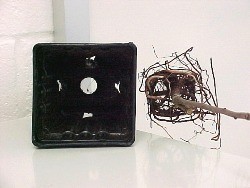
Root growth follows the smooth insides of the container wall.
|
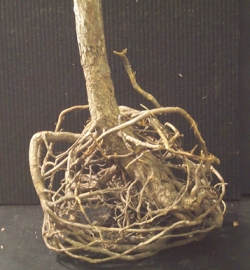
Later root growth increases the thickness of these roots.
|
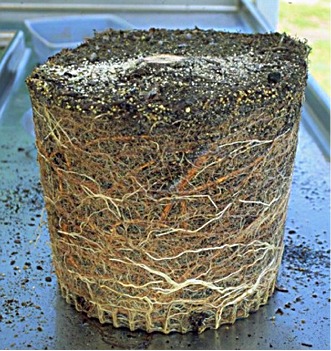
Circling roots at the container wall happen even in large
smooth-walled containers. |
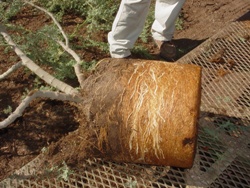
These circling roots at the outside of the root ball must be
removed before planting in the landscape. |
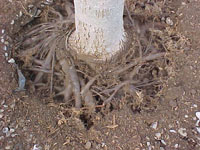
When circling roots are not removed, they will grow thicker
and girdle the tree.
|
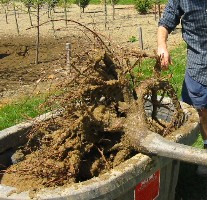
Poor root structures do not self-correct in the landscape.
|
